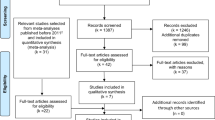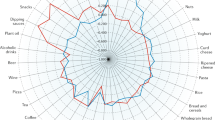Abstract
Intakes of starch, non-starch polysaccharides (NSPs), protein and fat have been compared with colorectal cancer incidence in 12 populations worldwide. There were strong inverse associations between starch consumption and large bowel cancer incidence (large bowel r = -0.70, colon r = -0.76). There was no significant relation with NSPs, although the association with large bowel cancer incidence was still significant when NSP was combined with resistant starch (RS) to give an estimate of fermentable carbohydrate (large bowel r = -0.52, colon r = -0.60). The relationships between starch, RS and NSPs and cancer incidence remained statistically significant after adjusting for fat and protein intakes. The strong inverse associations found here suggest a potentially important role for starch in protection against colorectal cancer and correspond with the hypothesis that fermentation in the colon is the mechanism for preventing colorectal cancer. Measures of both starch and NSPs need to be included in future epidemiological studies of diet and bowel cancer.
This is a preview of subscription content, access via your institution
Access options
Subscribe to this journal
Receive 24 print issues and online access
$259.00 per year
only $10.79 per issue
Buy this article
- Purchase on Springer Link
- Instant access to full article PDF
Prices may be subject to local taxes which are calculated during checkout
Similar content being viewed by others
Author information
Authors and Affiliations
Rights and permissions
About this article
Cite this article
Cassidy, A., Bingham, S. & Cummings, J. Starch intake and colorectal cancer risk: an international comparison. Br J Cancer 69, 937–942 (1994). https://doi.org/10.1038/bjc.1994.181
Issue Date:
DOI: https://doi.org/10.1038/bjc.1994.181
This article is cited by
-
The dysbiosis signature of Fusobacterium nucleatum in colorectal cancer-cause or consequences? A systematic review
Cancer Cell International (2021)
-
In-Vitro Prebiotic Analysis of Microbiota Accessible Pectic Polysaccharides
Current Microbiology (2019)
-
Effects of beta-glucan and resistant starch on wheat dough and prebiotic bread properties
Journal of Food Science and Technology (2018)
-
Starch formation inside plastids of higher plants
Protoplasma (2018)
-
Microbial metabolism of dietary components to bioactive metabolites: opportunities for new therapeutic interventions
Genome Medicine (2016)



